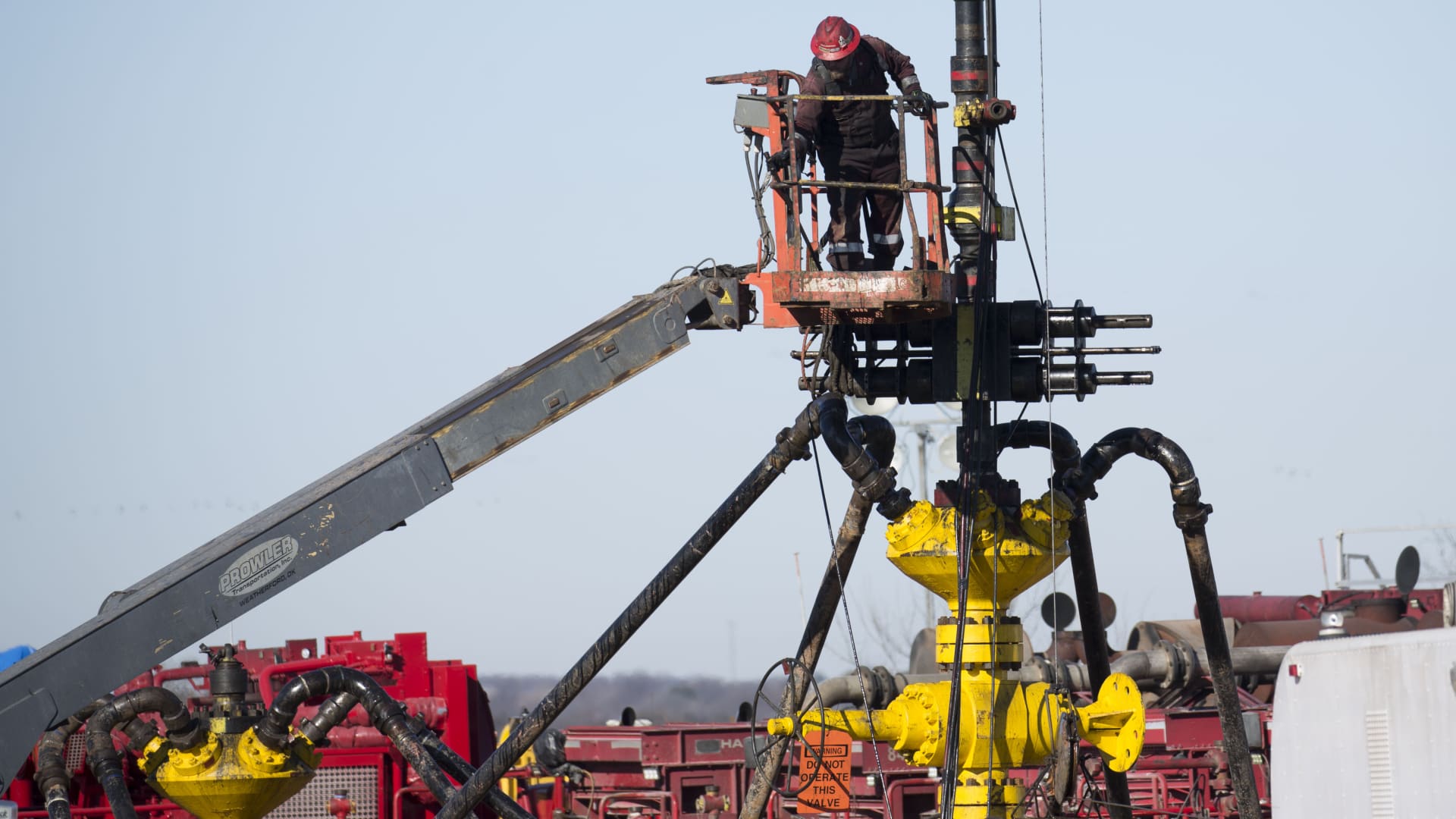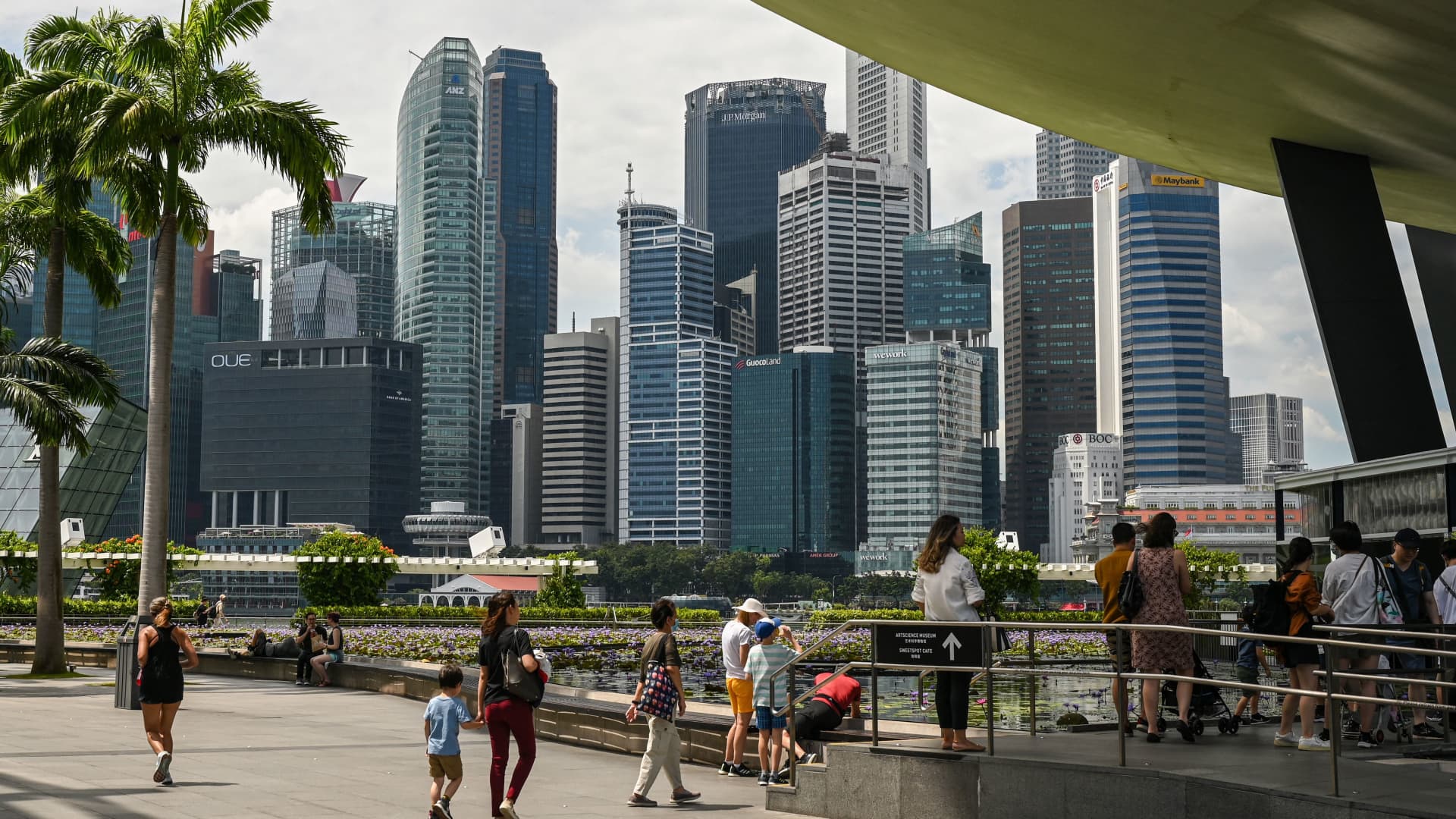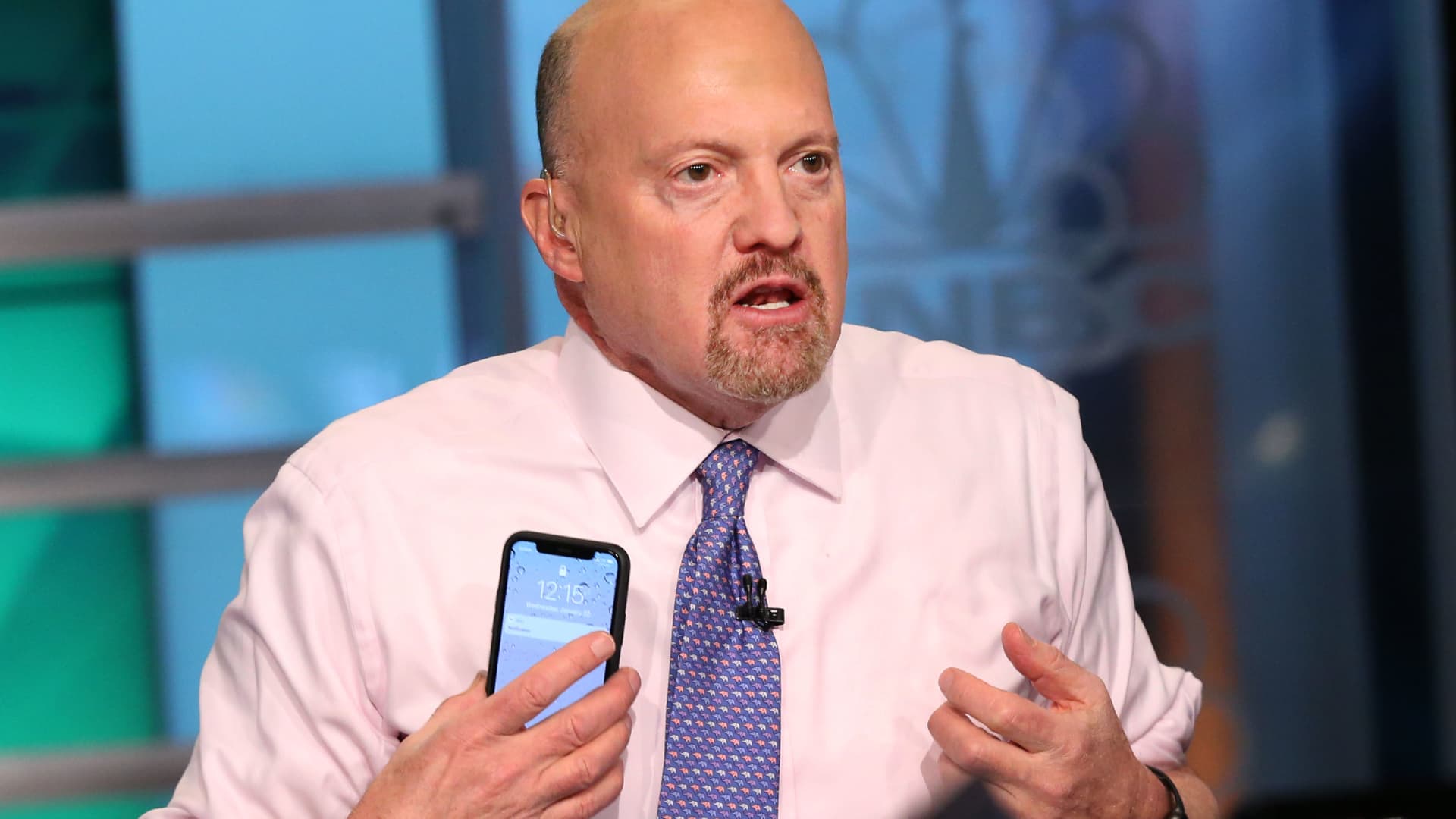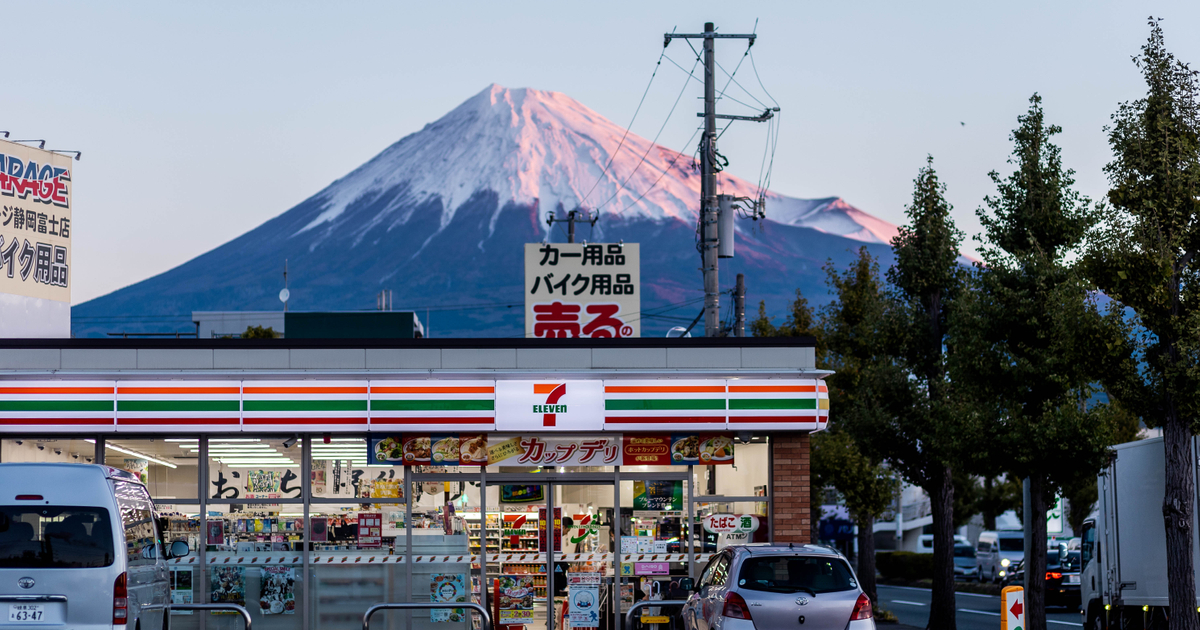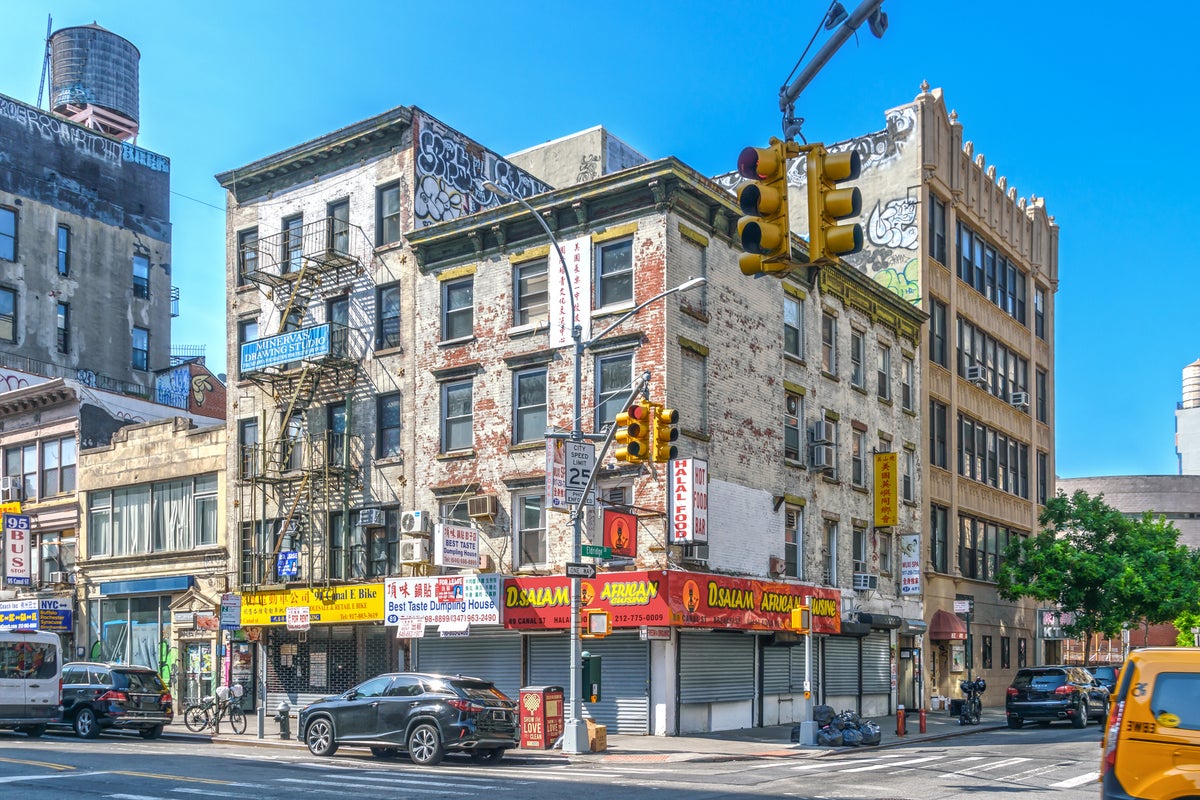Pharmacy staff from Walgreens, CVS say they’re at a breaking point — here’s what their days look like
Workers are concerned that Walgreens and CVS are placing unreasonable demands on them, without providing enough resources to safely execute tasks.
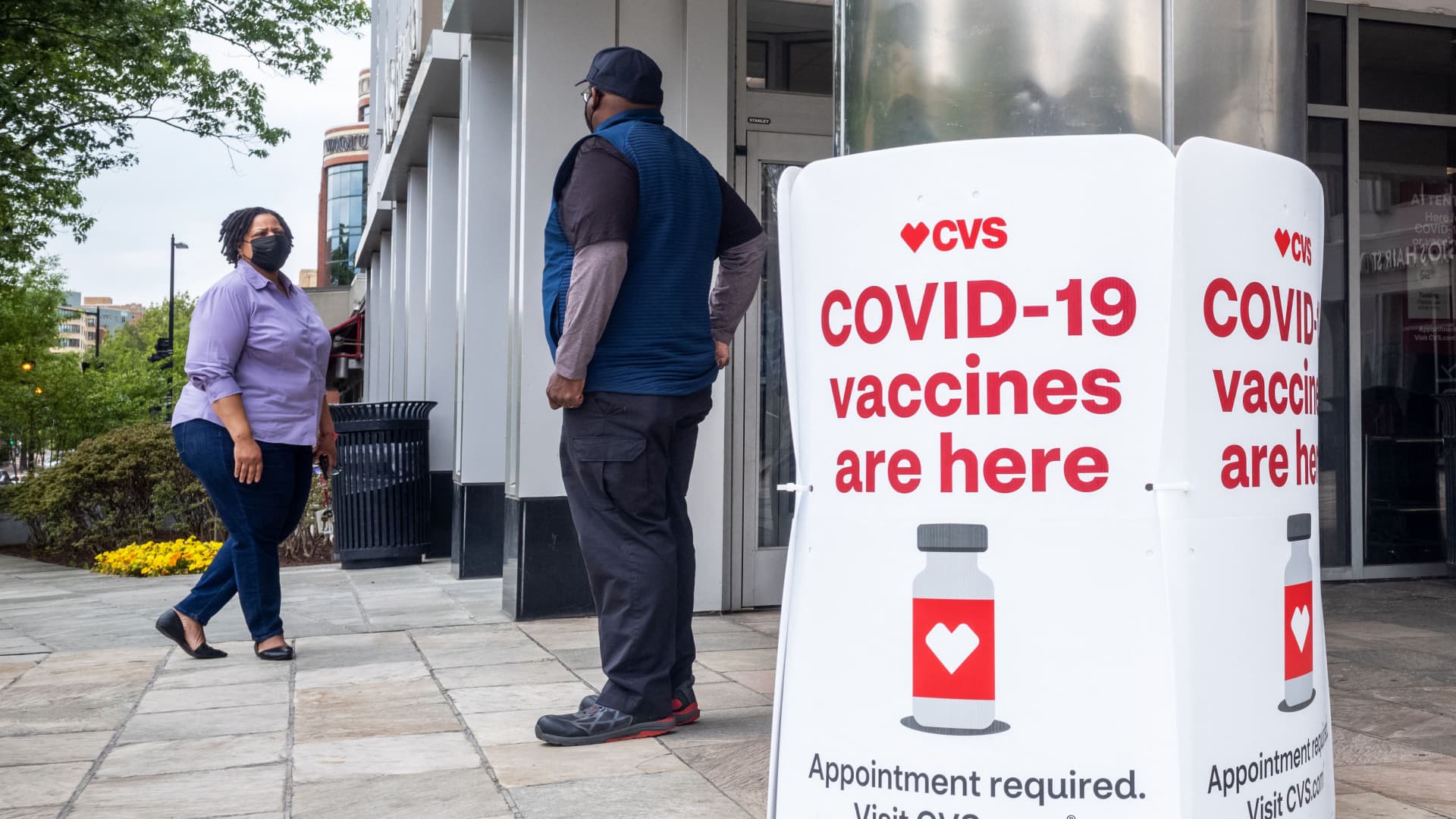
Signs offering COVID-19 vaccinations are seen outside of a CVS pharmacy in Washington, DC.
Mandel Ngan | AFP | Getty Images
Many pharmacy employees at some of the largest U.S. drugstore chains say they're reaching a breaking point.
On top of verifying, filling and dispensing prescriptions, pharmacists and support staff are responsible for administering vaccines, fixing insurance issues, transferring prescriptions to other pharmacies and tending to dozens of patients in stores and over the phone, among other tasks. Those workers have said they are concerned that companies like Walgreens and CVS are placing unreasonable demands on them, without providing enough staffing or resources to safely execute tasks.
Frustrated by what they describe as increasing workloads, understaffing and cuts to their hours, pharmacy staff from Walgreens locations around the country and CVS stores in the Kansas City area have walked off the job in recent weeks — and some employees are planning to walk out again from Oct. 30 to Nov. 1.
CNBC spoke to employees from both Walgreens and CVS, including a pharmacist, two pharmacy technicians and a store manager, about what their typical workday looks like. The employees, all of whom requested anonymity for fear of retaliation, described ending their shifts exhausted after spending hours juggling dozens of tasks around the pharmacy without enough extra hands to support them.
The two companies were the biggest pharmacies in the U.S. based on prescription drug market share in 2022. Both CVS and Walgreens operate around 9,000 retail store locations across the U.S.
CVS has more than 30,000 pharmacists and 70,000 pharmacy technicians, while rival Walgreens has more than 86,000 health-care service providers, including pharmacists, pharmacy technicians and other health-related professionals. CVS pharmacists make $61.44 an hour on average, while Walgreens pharmacists make $53.85 per hour on average, according to employment website Indeed.
A spokesperson for Walgreens said the company recognizes the "incredible work our pharmacists and technicians do every day" and has taken several steps in its pharmacies "to ensure that our teams can concentrate on providing optimal patient care."
More CNBC health coverage
The company's ongoing efforts are focused on how it can recruit, retain and reward pharmacy staff, the spokesperson said. They added that Walgreens has improved technology and centralized many operations to help maintain appropriate workloads in pharmacies.
A spokesperson for CVS said the company is facing "unprecedented demand and a clinical workforce shortage in the health care industry and [is] making targeted investments in our retail pharmacy business in direct response to feedback from our pharmacy teams."
Those investments include enabling teams to schedule additional support as needed, enhancing pharmacist and technician recruitment and hiring and strengthening pharmacy technician training, according to the spokesperson. They said those changes will begin in November and roll out throughout next year.
Here's what a typical day looks like for some staff from the two chains, according to the accounts related to CNBC.
Walgreens pharmacist
A Walgreens pharmacist said their shifts range anywhere from six to 12 hours on three to five days of the week. The pharmacist said they typically arrive for work at 8 a.m., an hour before the shift.
The pharmacist typically begins the shift by completing several paperwork tasks, which take about five to 10 minutes.
Then, the pharmacist checks which medications are out of stock. The pharmacist said that task is primarily the responsibility of pharmacy technicians, but it often falls to them because their colleagues are stretched thin with other duties.
The pharmacist also takes about 20 to 30 minutes to check which medications weren't delivered to the pharmacy by drug distributors, and calls patients to inform them about when they can expect their prescriptions to be ready.
The pharmacist then spends 10 to 15 minutes canceling vaccination appointments for shots the pharmacy doesn't have in stock, which involves calling patients and redirecting them to other store locations with vaccines available. The pharmacist said Walgreens is allowing people to schedule appointments for any vaccine online, even if a store location doesn't have it in stock.
The Walgreens spokesperson acknowledged that some pharmacy locations had to reschedule appointments when vaccines first became available this fall due to delays in supply, and added that the chain has apologized for any inconvenience caused to consumers. However, the spokesperson said that all locations had the necessary supply "within a few days."
By 9:15 a.m., vaccine appointments begin and continue until 6:45 p.m., according to the pharmacist. Their store usually takes one appointment every 15 minutes, and some patients get up to four vaccines at a time.
The pharmacist and a pharmacy technician then juggle administering shots with several other tasks. Giving jabs has become even more challenging in recent months due to the arrival of new vaccines against Covid and respiratory syncytial virus.
Among the other duties is addressing the prickly problems related to insurance coverage for prescriptions, the pharmacist said. Their store receives 100 to 160 insurance issues in their system each day, so the pharmacist dedicates up to three 30-minute to one-hour chunks of their shift to addressing them.
Both pharmacists and technicians also have to tend to customers in-store and over the phone. The pharmacist said they get eight to 10 phone calls per hour on average, which can take up to 10 to 15 minutes each.
A sign advertises COVID-19 (coronavirus) vaccine shots at a Walgreens Pharmacy in Somerville, Massachusetts, August 14, 2023.
Brian Snyder | Reuters
All of those tasks — along with other minor responsibilities — are additional to the pharmacist's main job of verifying and dispensing prescriptions.
The technician typically handles the first part of that task, which involves processing new prescription orders from doctors.
The pharmacist said they have to check that all prescription information entered into the system matches what the doctor ordered for a patient. Their store typically receives 300 prescriptions a day, so the pharmacist said they review around 25 an hour. A technician or the pharmacist then fills those prescriptions, and the pharmacist does a final review to make sure the medications in the bottles are correct.
The pharmacist said they are often interrupted when performing tasks, given the urgency of other issues. The disruptions can create a backlog of work.
The pharmacist noted that the pharmacy closes for their scheduled lunch break from 1:30 p.m. to 2 p.m., which they often work through. By lunch, they often have to address new insurance issues or catch up on other work they couldn't get to while working directly with patients.
Pharmacy technicians from CVS, Walgreens
Pharmacy technicians are medical professionals who work alongside pharmacists to help and support patients.
One CVS pharmacy technician said they typically come to their store location at 7:50 a.m., 10 minutes before their eight-hour shift starts. The technician said they typically work with one to two other technicians and one pharmacist during their shift, which they believe is not enough to handle the workload.
The technician said they start off their day by processing new prescription orders from doctors — a task that they continuously do throughout the day. The technician said they have to match each prescription to the patient profile in the CVS system and enter all the correct information before sending it to a pharmacist for review.
The technician also takes care of another part of the process, which involves filling the prescriptions and printing labels before the pharmacist reviews it for a final time. They said their store location's prescription volume is 600 to 1,000 per day.
The technician said that as soon as their store location opens, they and their co-workers have to handle dozens of patient phone calls, and customers waiting to get their prescriptions or other essentials through the drive-thru.
In addition to filling prescriptions and tending to patients, the technician said they alternate performing several other tasks throughout the day. The duties include administering vaccines and returning medications that weren't picked up by patients to pharmacy shelves.
A CVS pharmacy stands in a Brooklyn neighborhood on February 08, 2023 in New York City.
Spencer Platt | Getty Images
A technician from Walgreens has similar duties, but their shift is usually from 5 p.m. to 11 p.m. That technician said they feel anxiety whenever they start their shift because there is typically an influx of patients coming to the store who are just getting off of work: "You're pretty much walking right into chaos."
Patients often end up waiting for help due to what the Walgreens technician called understaffing at their location. They added that frustrated patients sometimes yell or snap at pharmacy staff, which can be "extremely overwhelming."
The Walgreens technician said they typically stay longer after their shift to help complete mandatory closing duties, such as taking out the garbage and disposing of sensitive patient information. After arriving home, they said they "completely crash" due to exhaustion.
Some employees who don't technically have responsibilities in the pharmacy may end up helping stressed-out pharmacists and technicians.
A CVS store manager said that on three to four days of the week they work at the front of the store from 8 a.m. to 12 p.m. and then help out at their location's pharmacy until 9 p.m. The manager still has a pharmacy technician license, which allows them to perform tasks like administering vaccines.
The store manager said they are a salaried employee, so they are "essentially working in the pharmacy for free" to give their staff extra support.
"In some shape or form, myself or my staff are being pushed into an aspect of the business that we didn't sign up for," the store manager said. "We're being pushed back there because we don't have the resources."

 Aliver
Aliver 







